Around Oazis Tanya, within a radius of (maximum) 1 hour’s drive, you’ll find several wonderful places to visit.
Most roads in Hungary pass through vast plains, small towns, and villages, so there’s plenty to see along the way.
6 cities to visit near Zsana:
– Kiskunhalas
– Szeged
– Kecskemét
– Baja
– Soltvadkert
– Subotica
Closest town
Kiskunhalas
Kiskunhalas, the city closest to the campsite (12 km), has 30,000 inhabitants, serves as a regional hub, and is located 134 km from Budapest. The city is situated on the highest point of the Homokhátság (sand plain) between the Danube and the Tisza rivers. It has a 600-year history primarily centered around agricultural activities. The natural landscape attracts nature lovers, birdwatchers, and hikers. The town itself is a typical provincial city with a few highlights:
- Lace Museum: Houses many beautiful pieces of the world-famous hand-sewn lace.
- Town Hall: Located in the center, recognizable by its lookout tower and adorned with Art Nouveau decorations. Behind the town hall is a square with several restaurants and ice cream parlors.
- Sáfrik Mill: Once used for grinding flour, it is now a national monument.
Good to Know:
- On the first Sunday of each month, there’s a large regional market where almost anything can be found.
- On Wednesdays and Saturdays, Kiskunhalas hosts a vegetable and clothing market.
- You’ll find several supermarkets in Kiskunhalas, such as Lidl, Aldi, and Tesco, open Monday through Sunday.
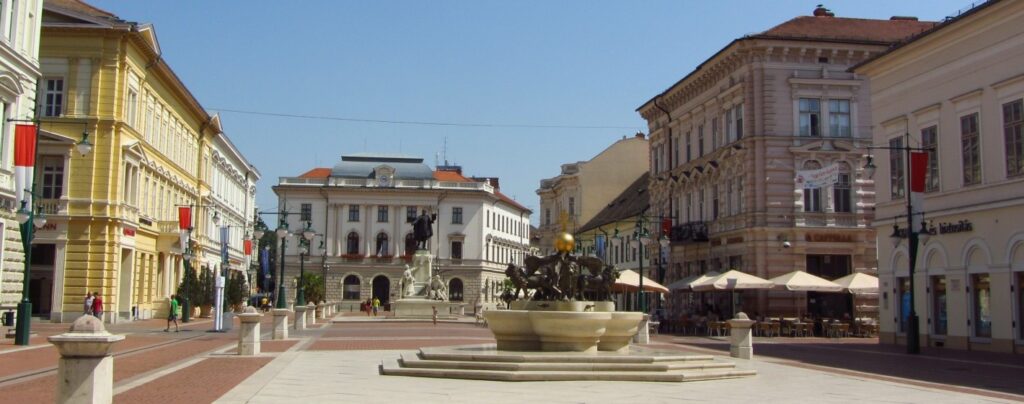
University city with beautiful architecture
Szeged
Szeged is Hungary’s fourth-largest city, but its center is easily accessible, and everything is close enough to explore on foot. The city lies on the banks of the Tisza River, near the Serbian and Romanian borders.
Szeged was largely destroyed in 1879 by a flood of the Tisza and was rebuilt in a modern style for its time. Since 1921, it has been a university city, hosting many international students. The city boasts shops, restaurants, terraces, stunning architecture, and various cultural landmarks:
- The Palace of Culture, housing the Ferenc Móra Museum and the Somogyi Library.
- Remnants of the old fortress, strategically important until the 18th century, can be found behind the museum. The remaining part hosts a small museum about local history.
- Széchenyi Square: The city’s main square, a 50,000 m² park with large trees and fountains.
- The Votive Church: A neo-Romanesque cathedral built between 1913 and 1930, located on Dom Square. In July and August, the Szeged Festival (opera and ballet performances) takes place here, with the church façade as a backdrop. The cathedral is usually open to visitors and is definitely worth exploring inside!
- The Synagogue: Hungary’s second-largest synagogue, featuring a 48.5-meter dome and a beautiful example of the Art Nouveau style blended with Hungarian design.
Szeged is also famous for two typical Hungarian products: salami and paprika. The local cuisine is renowned for its fish soup, szegedi halászlé.
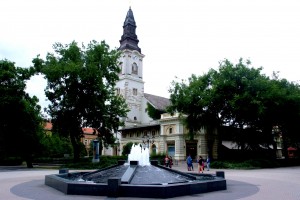
Capital of this region
Kecskemét
Located halfway between Budapest and Szeged, Kecskemét is the capital of the Bács-Kiskun province.
Situated in an important fruit-growing region, Kecskemét was first mentioned as a town in a 1368 letter from the Hungarian king. In and around the city center—which is not too large or crowded—you’ll find beautiful buildings, nice shops, and a few excellent restaurants.
Five churches form a circle around the city center, and on Saturdays, it’s quite common to see weddings taking place, with brides, grooms, and their guests passing through the streets. The picturesque square and the magnificent town hall are perfect for relaxing at one of the many terraces.
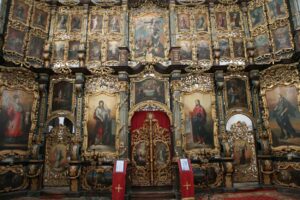
Small friendly town on the Danube
Baja
Baja is a small town on the Danube with a rich history, first mentioned in 1308. During the Habsburg Empire, Baja became a hub for commerce and transport, shipping grain and wine via the river to Austria and Germany. After World War I, the city briefly fell under Yugoslavian control but was returned to Hungary in 1920. Post-World War II, it became known for its textile industry and its important bridge over the Danube.
Today, Baja remains a key regional center for education, government, and various industries. Along the Danube and the main city square, you’ll find restaurants and terraces. Some notable landmarks include:
- Franciscan Monastery
- Serbian Orthodox Church
- Calvary Chapel
- St. Peter and Paul Church
- Grassalkovich Palace: Built in 1744, the palace was owned by several noble families over the years.
Good to Know:
- In September, an autumn festival features theater, dance, and concerts.
- The second Saturday of July is a celebration in Baja, where over 2,000 pots of spicy fish soup are cooked on the main square.
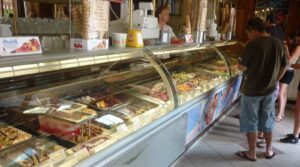
Icecream and pastry!!
Soltvadkert
Soltvadkert is a small town famous for its wine and pálinka production, which has sustained the area for centuries. Near the town lies Vadkert Lake (Büdös-tó), a popular spot for Hungarian tourists. You can enjoy the beach for a small fee. Soltvadkert is especially worth visiting for the best ice cream and pastries in the area at Szent Korona Cukrászda.
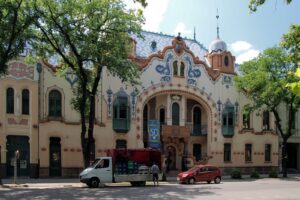
Art Nouveau in Serbia
Subotica
Subotica is just across the border in Serbia, reachable within an hour from Oazis Tanya. Once at the border, it’s only a 15-minute drive. Please keep in mind that there may be checks at the border, especially during the high season.
In 1686, the city came under Austrian rule and gained the status of a free royal city. During the Austro-Hungarian Empire, it was Hungarian, and even today, 50% of the population is Hungarian. After the empire’s fall, Subotica became part of Yugoslavia in 1920.
The city center is characterized by exuberant Hungarian Art Nouveau-style buildings.
